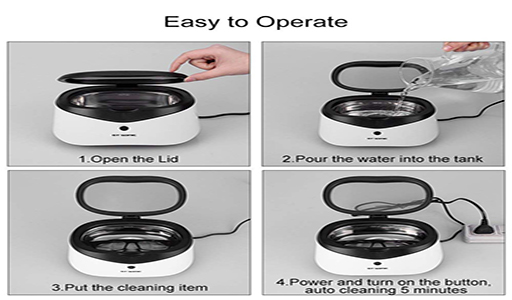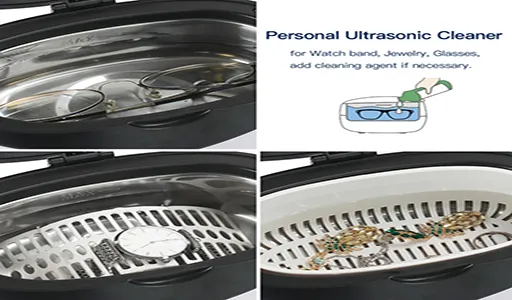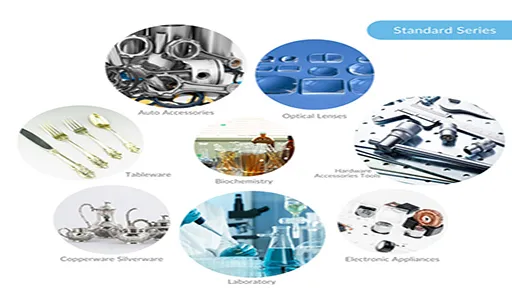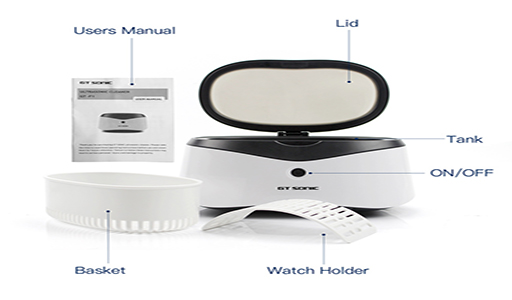Precautions for Using Ultrasonic Cleaners
2025-08-25
Ultrasonic cleaning systems, renowned for their high efficiency and precision in cleaning, have found widespread application in numerous industries. By utilizing high-frequency sound waves, these devices effectively eliminate stains, grease, and microscopic particles from the surfaces of objects.
Ultrasonic cleaning systems, renowned for their high efficiency and precision in cleaning, have found widespread application in numerous industries. By utilizing high-frequency sound waves, these devices effectively eliminate stains, grease, and microscopic particles from the surfaces of objects. However, despite their outstanding cleaning abilities, there are still several important considerations to keep in mind during operation, including correct handling procedures, appropriate item selection, and equipment compatibility. This article explores the key precautions for operating an ultrasonic cleaning device and introduces GT ultrasonic systems, helping users select the best cleaning solution for their needs.
Proper Usage of an Ultrasonic Cleaning Machine

Verify Equipment Functionality
Before operating an ultrasonic washing machine, ensure all components are working properly. Check the power supply for consistency, inspect the cleaning chamber and ultrasonic generator for damage, and confirm that the vibration plates are in working order. Also, inspect the cables and plugs for wear or looseness, ensuring a stable power connection to avoid any disruptions in cleaning performance.
Select the Right Cleaning Solution
The type of cleaning solution used plays a critical role in the cleaning results. Common solutions include water, dish detergent, vinegar, and specially formulated cleaning agents. Depending on the material of the items being cleaned and the type of contamination, different liquids may be necessary. For example, dish soap is effective for metal surfaces, while optical devices require specific cleaners to prevent coating damage.
Adjust the Frequency and Power Settings
Adjust the ultrasonic machine’s frequency and power levels according to the nature of the items being cleaned. For delicate objects such as jewelry or electronic components, use lower frequencies and power settings to prevent damage. For regular or industrial-grade items, higher power and frequency settings improve cleaning efficiency.
Proper Item Placement
When placing items in the ultrasonic tank, ensure there is sufficient space between each item. Avoid overcrowding as this can hinder the cleaning solution’s ability to cover all surfaces evenly. Proper positioning allows the ultrasonic waves to reach the entire surface area, ensuring a more thorough clean.
Monitor the Cleaning Process
After starting the ultrasonic cleaning unit, periodically check the progress. Different materials and levels of contamination may require varying cleaning durations. It’s recommended to pause the cycle periodically to inspect the items’ cleanliness and ensure the process is working as intended.
Careful Removal of Cleaned Items
After the cleaning cycle is finished, remove the items carefully to prevent damage from heat or vibration. For fragile items, it is best to use compressed air or a soft cloth to gently dry them, ensuring that no cleaning solution remains on the surface.
Post-Cleaning Rinsing
If any cleaning agent residue remains on the items, rinse them thoroughly with water. For wet items, dry them with a soft cloth or allow them to air dry in a well-ventilated area to prevent water spots.
Considerations When Choosing Items for Ultrasonic Cleaning

Which Liquids Can Be Used in an Ultrasonic Cleaner?
The selection of cleaning liquid is key to a successful ultrasonic cleaning process. Common liquids include:Water, Best for removing dust, grease, and light stains; this is the most commonly used liquid in ultrasonic cleaning;Dish Soap,Effective for dissolving oils and stubborn stains, especially on metal and glass surfaces;Vinegar,Its acidic properties make it suitable for eliminating mineral deposits and water stains, often from hard water;Specialized Solutions,Industry-specific liquids designed to tackle certain types of dirt or contaminants, such as for jewelry or medical instruments, without damaging delicate items.
Which Items Should Not Be Cleaned in an Ultrasonic Device?
Not all items are suitable for ultrasonic cleaning. Incorrect selection can result in poor cleaning outcomes or irreversible damage. Items to avoid include:Sensitive Materials,Pearls, soft gemstones (e.g., jade, coral), and coated surfaces are vulnerable to ultrasonic vibrations, which can cause surface damage or color fading;Electronic Devices and Powered Equipment,Items such as batteries and electronic components may suffer from ultrasonic vibrations, leading to potential short circuits, failure, or fire risks;Organic Materials, Wood, leather, and fabric materials are unsuitable for ultrasonic cleaning, as vibrations may distort, discolor, or deteriorate them.

Choosing the Right Ultrasonic Cleaning System for Specific Applications
The choice of ultrasonic cleaning machine will depend on the intended use. Here are some considerations for various applications:
Laboratory Use
Laboratories require high-precision cleaning with adjustable parameters. Ultrasonic washers with adjustable frequency and power are ideal for precise cleaning needs. GT laboratory-specific ultrasonic devices ensure thorough and contamination-free cleaning.
Jewelry Cleaning
Cleaning precious jewelry requires a careful approach to avoid damage to delicate metals and gemstones. Low-frequency, low-power ultrasonic washers are best for effectively cleaning these items without harming their surfaces.
Optical Equipment
When cleaning optical instruments like eyeglasses, microscope lenses, and camera lenses, high standards of care are necessary. A cleaning system with adjustable power and frequency settings ensures the lenses are cleaned without scratching. Gote’s ultrasonic washers offer a fine-tuning mode that caters to these rigorous requirements.
Industrial Use
Industrial cleaning demands high performance and large capacity. Ultrasonic washing systems with high power and efficiency are ideal for cleaning mechanical parts, automotive components, and other large industrial items, providing fast and effective cleaning results.
Medical Equipment
Medical instruments must be cleaned according to strict hygiene standards. Ultrasonic cleaners equipped with temperature control and disinfection features are perfect for this purpose. GT´s medical-grade ultrasonic washers ensure thorough cleaning while complying with health and safety regulations.
Advantages of Ultrasonic Cleaning Systems

The benefits of using ultrasonic cleaning systems are vast, including:
Efficiency
Ultrasonic washers reach every nook and cranny of an item, removing even the most stubborn dirt, grease, and dust, which helps to save considerable cleaning time.
Environmental Friendliness
These cleaners use very little cleaning solution, and most can be reused, which helps reduce waste and environmental pollution.
Gentleness
Delicate items, such as jewelry and optical instruments, can be cleaned without risk of damage, thanks to the gentle cleaning action of ultrasonic waves.
Energy Efficiency
Ultrasonic cleaning systems are highly energy-efficient, providing quick cleaning speeds while consuming less power than traditional cleaning methods.
Precision
Ultrasonic waves are capable of cleaning the tiniest gaps and crevices, which traditional methods often fail to reach.
In conclusion, using an ultrasonic cleaning system correctly, choosing the right items, and pairing the right equipment are essential for optimal cleaning results. By selecting the appropriate cleaning solution and machine, users can enhance both the efficiency and effectiveness of the cleaning process. GT ultrasonic cleaning systems, known for their reliable performance, precise results, and versatility across a variety of applications, are a top choice for industries ranging from jewelry cleaning to medical disinfection and industrial washing. Whether you need a cleaning system for delicate items, large-scale industrial cleaning, or highly specialized medical equipment, GT offers eco-friendly, energy-efficient, and safe solutions
For those seeking a reliable, stable, and environmentally-conscious ultrasonic cleaning system, GT Sonic ultrasonic washers are the best option available.









